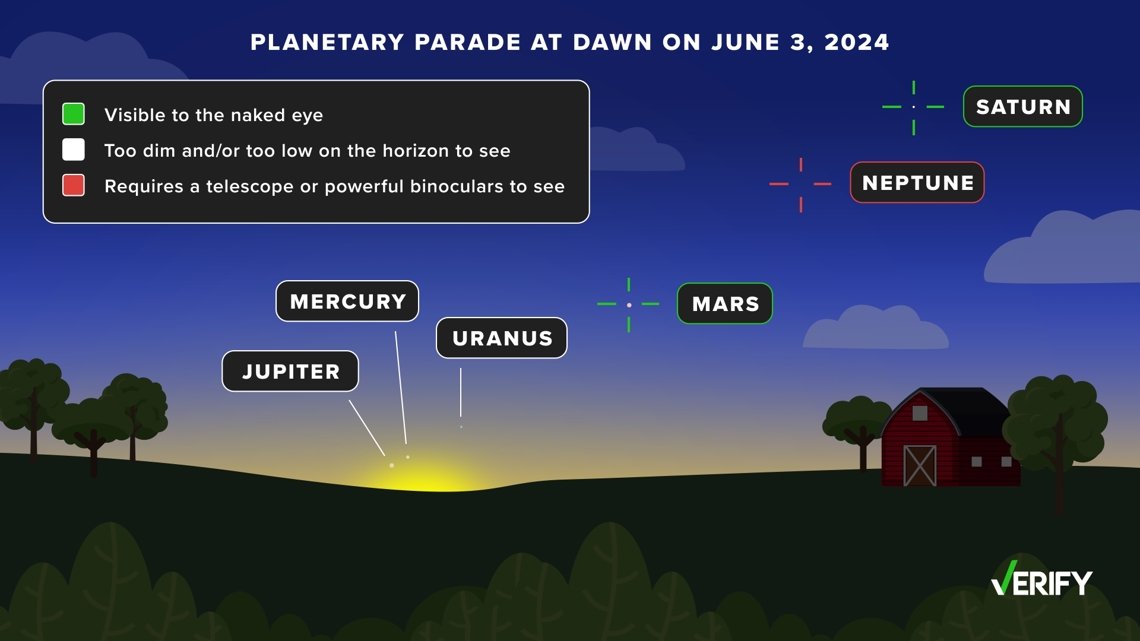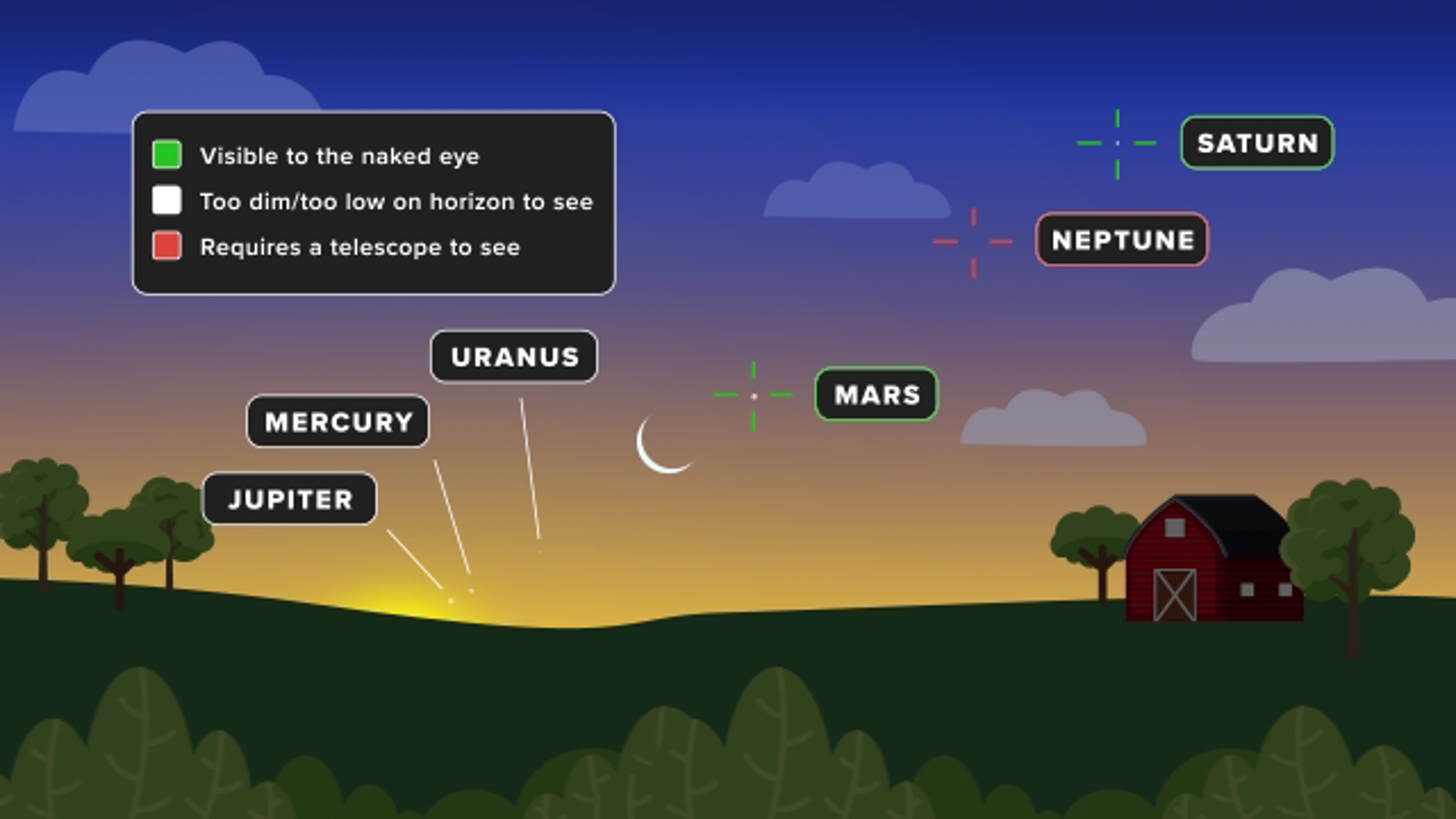It has been an exciting year for skygazers in the United States. On April 8, millions of people across the United States were able to view a total solar eclipse. In May, a powerful solar storm caused the aurora borealis to stretch farther south than it usually would, making it visible in much of the U.S., even as far south as Florida.
And according to chatter online, the next big event will be a “planetary parade” before dawn starting on June 3. The planetary parade or planetary alignment refers to an astronomical event in which the orbits of Jupiter, Mercury, Uranus, Mars, Neptune and Saturn align, putting all six planets in Earth’s night sky at once.
Some people claim this event will be visible with the naked eye.
THE QUESTION
Will the June 3 and 4 planetary alignment be visible with the naked eye?
THE SOURCES
Agena Astro, an astronomy shop
THE ANSWER
No, the June 3 and 4 planetary alignment will not be visible with the naked eye.
WHAT WE FOUND
Just before dawn on June 3 and June 4, six planets — Jupiter, Mercury, Uranus, Mars, Neptune and Saturn — will line up in the night sky. However, you’ll need a telescope or binoculars to see all the planets.
“To see them all, you’ll need binoculars or a telescope aimed at the eastern horizon before sunrise on June 3rd,” a Weather Channel video says.
Preston Dyches of NASA’s “Skywatching Tips” video series told Phys.org, a science news site, that only two planets, if any, will be visible to the naked eye on June 3. Those planets are Mars and Saturn, according to Live Science, another science news site.
But the other four will be much more difficult to see. Multiple planets, particularly Mercury and Jupiter, will be incredibly low in the sky, and Uranus is very dim and challenging to spot even in ideal conditions, Dyches told Phys.org. The skyglow that forms near dawn will make it more difficult to see the planets, especially those closer to the horizon.


On a typical night, Neptune and Uranus are the hardest of the seven other planets in the solar system to spot because they are the farthest away. Both planets appear star-like in binoculars and at low magnification in a telescope, according to Agena Astro, an astronomy shop. Agena Astro says telescopes with large apertures are best for spotting the planets in more detail.
A telescope or pair of binoculars capable of spotting those two planets should be enough to view the rest of the planets before it gets too bright outside.
EarthSky reports your best chance to see all six planets is 40 minutes before sunrise on June 3 and June 4, although you might also have an opportunity to catch all six on June 5.
It’s not uncommon for several planets to align themselves in the night sky at once, although large alignments are rare, according to Science Alert. A planetary alignment is when three or more planets appear in the night sky at the same time; five or more planets in the night sky is considered a large alignment.
The planets appear in a straight line in the night sky because they all orbit the same plane around the sun, Science Alert explains. So when the planets are on the same side of the sun at the same time, we’ll see a planetary alignment from Earth.
Science Alert says we’ll have an opportunity to catch sight of an even larger planetary alignment next year. All seven of the other planets in the solar system will align in the night sky on Feb. 28, 2025.
And there are other astronomical spectacles still on the horizon, some of which may actually be visible to the naked eye.
A nova outburst, caused by a smaller star taking material from a larger star it orbits, should happen sometime in September and be as bright as the North Star for about a week, phys.org says.
The nova outburst is expected to be a “once-in-a-lifetime stargazing opportunity.”
This story is also available in Spanish / Lee este artículo también en español: No, no podrás ver el extraordinario alineamiento planetario a simple vista

